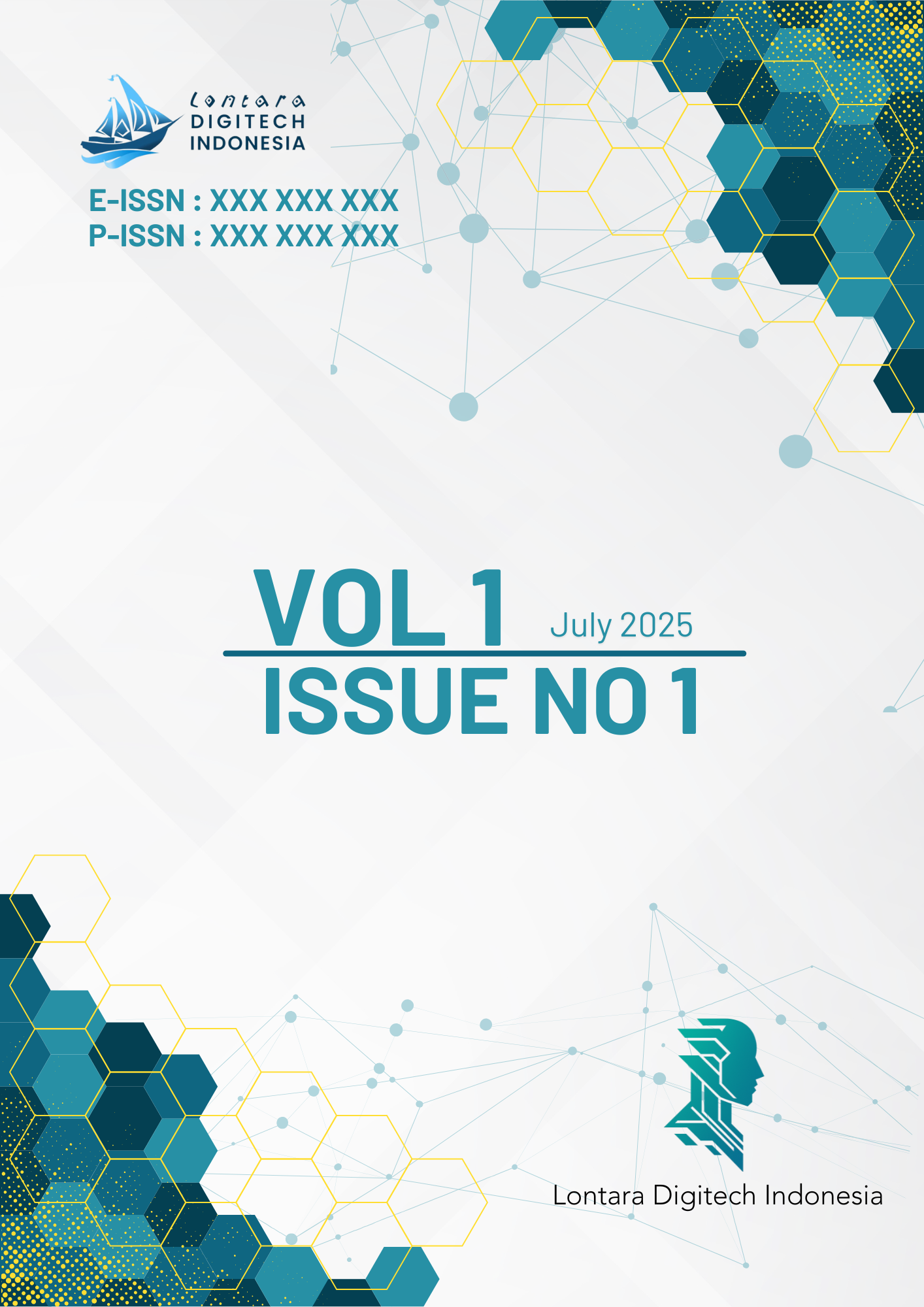Effects of Artificial Intelligence Integration on Design Mindset, Creativity, and Reflection
Keywords:
Artificial Intelligence, Creativity, Critical Reflection, Design Mindset, Technology Based LearningAbstract
Artificial intelligence (AI) improves the efficiency of the design process, helps with fast and accurate data analysis, and aids creativity with innovative ideas. Using a quantitative approach with a cross-sectional design, this study looked at how the incorporation of AI impacts students' creativity, design mindset, and reflection. 96 people responded using an online questionnaire. The results showed that artificial intelligence had a moderate positive effect on design mindset, especially in terms of concept building, problem finding, and design iteration. AI also helped students become more creative, develop imagination, and become more productive. Critical analysis, learning from mistakes, and a deeper understanding of the creative process are enabled by AI. The study found that AI integration can enhance human-machine collaboration to produce more innovative and reflective design outcomes. However, to implement it successfully, a balance between AI automation and human control is required. This study provides insights for educational institutions on how best to utilize AI in learning design and creativity
Downloads
References
[1] A. Holzinger, G. Langs, H. Denk, K. Zatloukal, and H. Müller, “Causability and explainability of artificial intelligence in medicine,” Jul. 01, 2019, Wiley-Blackwell. doi: 10.1002/widm.1312.
[2] R. Verganti, L. Vendraminelli, and M. Iansiti, “Innovation and Design in the Age of Artificial Intelligence,” Journal of Product Innovation Management, vol. 37, no. 3, pp. 212–227, May 2020, doi: 10.1111/jpim.12523.
[3] X. Zhai et al., “A Review of Artificial Intelligence (AI) in Education from 2010 to 2020,” 2021, Hindawi Limited. doi: 10.1155/2021/8812542.
[4] L. Simeone, “Pushing divergence and promoting convergence in a speculative design process: Considerations on the role of AI as a co-creation partner,” Jun. 2022. doi: 10.21606/drs.2022.197.
[5] Y. K. Dwivedi et al., “Artificial Intelligence (AI): Multidisciplinary perspectives on emerging challenges, opportunities, and agenda for research, practice and policy,” Int J Inf Manage, vol. 57, Apr. 2021, doi: 10.1016/j.ijinfomgt.2019.08.002.
[6] A. Barredo Arrieta et al., “Explainable Artificial Intelligence (XAI): Concepts, taxonomies, opportunities and challenges toward responsible AI,” Information Fusion, vol. 58, pp. 82–115, Jun. 2020, doi: 10.1016/j.inffus.2019.12.012.
[7] D. Paul, G. Sanap, S. Shenoy, D. Kalyane, K. Kalia, and R. K. Tekade, “Artificial intelligence in drug discovery and development,” Jan. 01, 2021, Elsevier Ltd. doi: 10.1016/j.drudis.2020.10.010.
[8] Y. Xu et al., “Artificial intelligence: A powerful paradigm for scientific research,” Nov. 28, 2021, Cell Press. doi: 10.1016/j.xinn.2021.100179.
[9] M. Nagendran et al., “Artificial intelligence versus clinicians: Systematic review of design, reporting standards, and claims of deep learning studies in medical imaging,” The BMJ, vol. 368, Mar. 2020, doi: 10.1136/bmj.m689.
[10] D. Gunning and D. W. Aha, “DARPA’s explainable artificial intelligence program,” AI Mag, vol. 40, no. 2, pp. 44–58, Jul. 2019, doi: 10.1609/aimag.v40i2.2850.
[11] T. Miller, “Explanation in artificial intelligence: Insights from the social sciences,” Feb. 01, 2019, Elsevier B.V. doi: 10.1016/j.artint.2018.07.007.
[12] M. Saritepeci and H. Yildiz Durak, “Effectiveness of artificial intelligence integration in design-based learning on design thinking mindset, creative and reflective thinking skills: An experi-mental study,” Educ Inf Technol (Dordr), 2024, doi: 10.1007/s10639-024-12829-2.
[13] F. Kamalov, D. Santandreu Calonge, and I. Gurrib, “New Era of Artificial Intelligence in Education: Towards a Sustainable Multifaceted Revolution,” Sustainability (Switzerland), vol. 15, no. 16, Aug. 2023, doi: 10.3390/su151612451.
[14] R. Marrone, V. Taddeo, and G. Hill, “Creativity and Artificial Intelligence—A Student Perspective,” J Intell, vol. 10, no. 3, Sep. 2022, doi: 10.3390/jintelligence10030065.
[15] M. I. de Vicente-Yagüe-Jara, O. López-Martínez, V. Navarro-Navarro, and F. Cuéllar-Santiago, “Writing, creativity, and artificial intelligence. ChatGPT in the university context,” Comunicar, vol. 31, no. 77, pp. 47–57, Oct. 2023, doi: 10.3916/C77-2023-04.
[16] R. Marrone, V. Taddeo, and G. Hill, “Creativity and Artificial Intelligence—A Student Perspective,” J Intell, vol. 10, no. 3, Sep. 2022, doi: 10.3390/jintelligence10030065.
[17] A. F. S. Borges, F. J. B. Laurindo, M. M. Spínola, R. F. Gonçalves, and C. A. Mattos, “The strategic use of artificial intelligence in the digital era: Systematic literature review and future research direc-tions,” Apr. 01, 2021, Elsevier Ltd. doi: 10.1016/j.ijinfomgt.2020.102225.
[18] J. Kim and M. Lou Maher, “The effect of AI-based inspiration on human design ideation,” International Journal of Design Creativity and Innovation, vol. 11, no. 2, pp. 81–98, 2023, doi: 10.1080/21650349.2023.2167124.
[19] M. A. Boden, “Artificial Intelligence Creativity and artificial intelligence.”
[20] I. Pont-Niclòs, Y. Echegoyen-Sanz, P. Orozco-Gómez, and A. Martín-Expeleta, “Creativity and artificial intelligence: A study with prospective teachers,” Digital Education Review, no. 45, pp. 91–97, Jul. 2024, doi: 10.1344/der.2024.45.91-97.
[21] S. O’Connor and ChatGPT, “Open artificial intelligence platforms in nursing education: Tools for academic progress or abuse?,” Jan. 01, 2023, Elsevier Ltd. doi: 10.1016/j.nepr.2022.103537.
Downloads
Published
Issue
Section
License
Copyright (c) 2025 Khaerul Amri, Intan Novita Kowaas, Andro Ruben Runtu, Rifky Muhajji

This work is licensed under a Creative Commons Attribution-ShareAlike 4.0 International License.






